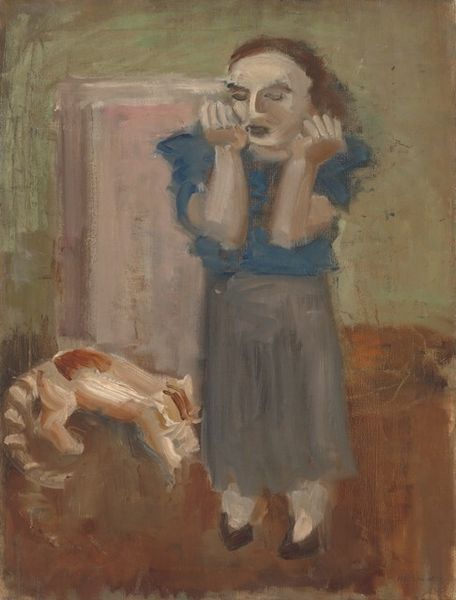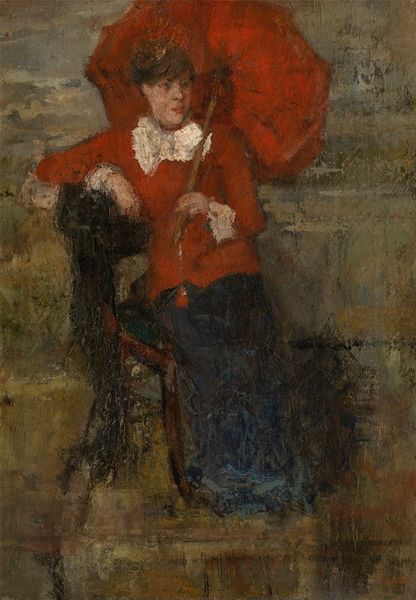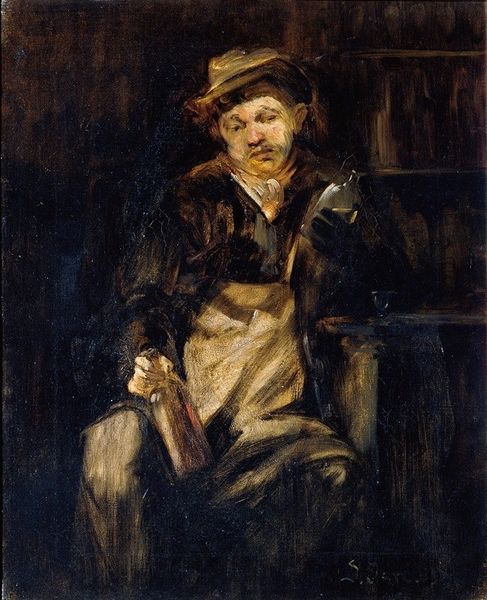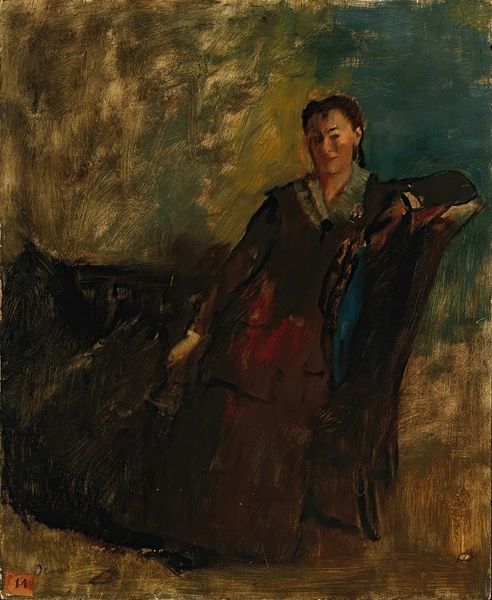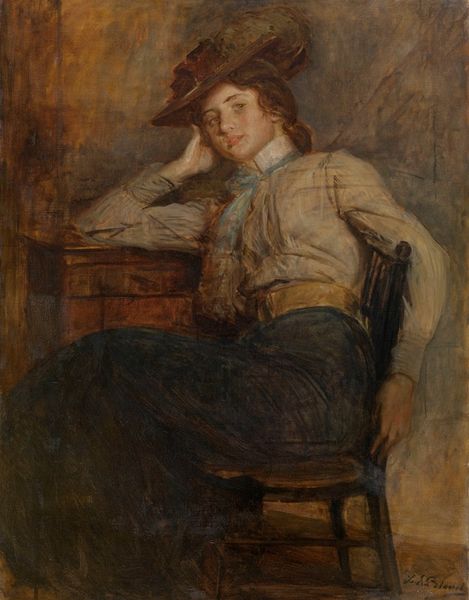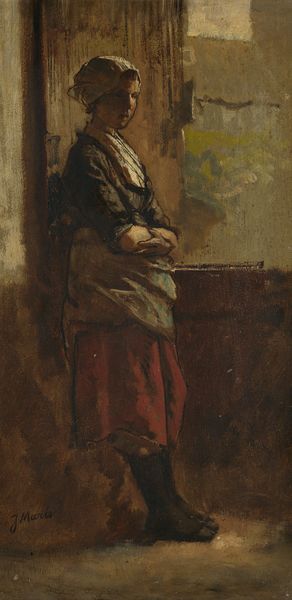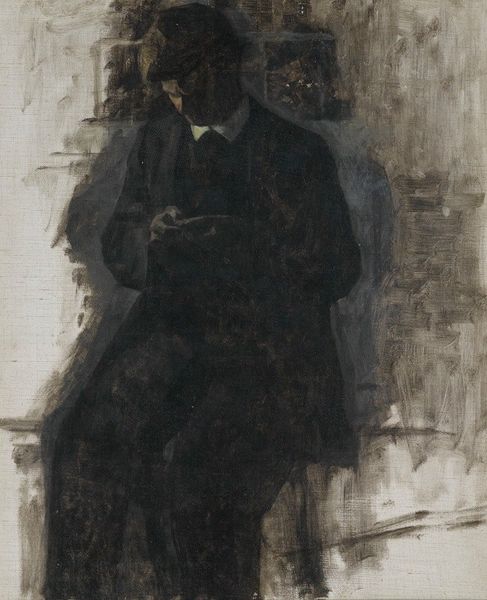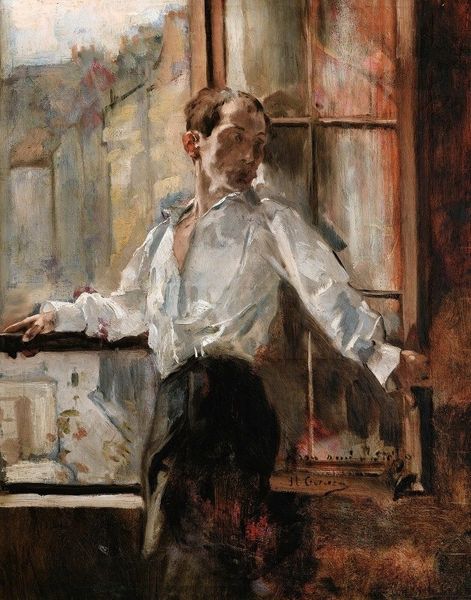
painting, oil-paint, impasto
#
portrait
#
figurative
#
painting
#
impressionism
#
oil-paint
#
oil painting
#
impasto
#
genre-painting
Copyright: Public Domain: Artvee
Curator: Look at this genre painting; “The Apprentice”, painted in 1876 by William Merritt Chase. It exemplifies Chase’s embrace of impressionism. Editor: My first impression is one of intimacy; despite the dark background, I am drawn in by the figure’s face, a momentary pause in their work, marked by this vibrant red apple, bringing color to the canvas. Curator: Genre paintings during the late 19th century often reflected a shift towards depicting everyday life and scenes, especially from the working classes. In this painting, the choice of portraying an apprentice suggests Chase’s engagement with the prevailing interest in representing common people in art. Editor: And apples of course carry symbolic weight; they appear in folklore as symbols of knowledge, temptation, and the story of human awakening from a passive state to one of active cognition. Note how the light is reflected in the apple as if illuminated. It is as if the model eating the fruit will receive enlightenment by consuming the very symbolic object! Curator: Yes, considering Chase’s involvement with artistic circles in Europe, and the burgeoning Impressionist movement, we see here the experimentation with loose brushwork and a focus on capturing fleeting moments. His commitment to representing modern life while drawing inspiration from European techniques positioned him within a larger dialogue about the role of art in society at that moment. Editor: Agreed. The apple acts almost as a visual marker of Chase's connection to European tradition whilst embracing the changing dynamic in the American art scene; it evokes earlier art imagery where consumption means the acquisition of knowledge and status. The painting captures more than just a snapshot; it seems to capture a young American artist taking a bite of that which defines him and is about to change his environment. Curator: Well, exploring Chase’s ‘The Apprentice’ does remind us how even seemingly simple genre scenes can embody broader narratives. The artistic and social developments within America are represented. Editor: Absolutely; it brings to the fore how a single image can act as a portal, inviting the spectator into a story much bigger than its setting and a whole system of interconnected ideas.
Comments
No comments
Be the first to comment and join the conversation on the ultimate creative platform.
